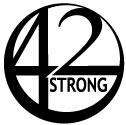We left Puerto Escondido for Oaxaca, ascending the thousand curve mountains that separate the two cities. We took the Highway 175, having heard that it was in better condition than Highway 131, which we took coming in. Except for the first 200 to 300 meters, this road was, in fact, in reasonably good condition. The initial stretch at the intersection with the coastal Highway 200 looks like the victim of a heavy-handed cluster bombing. It is essentially a wider than normal 4×4 track. We pumped the brakes and spun the wheel to avoid being swallowed by the Sarlacc craters of that ruined turn-off.
As we gained elevation along a relentless series of switchbacks, tropical shacks of corrugated tin and palm fronds metamorphosed into sturdy wooden structures that would have looked at home in any mountain town of the American Rockies. We pulled over to eat a simple lunch of eggs, rice and green beans in one such lodge. The meal was plain but the view from that ridge was anything but. The mountainside we sat upon plunged hundreds of sheer meters through a thick and verdant canopy. Knife edge ridges ruffled over a rugged terrain, whose formation showed evidence of a sword-wielding god throwing a temper tantrum.
Once again, we passed the sudden transition between the tropical side of the mountains and that of dry pines descending into a valley of agave and scrub brush. Everywhere, we began seeing crude signs advertising Oaxaca’s most famous product, mezcal. Se vende mezcal, they read, hand-painted on rough-hewn planks.

The city of Oaxaca rose up around us and Google Maps promptly led us astray. Mark, an Airbnb host we would meet later, called this effect “getting googlemapped” and I find it fitting. Turn left here, it advised us and we obeyed its directive off of the highway and onto a small street where traffic lay at a standstill. Vendors and other pedestrians threaded nimbly through the paralyzed cars. Every now and then, we inched forward only to be stopped to allow a delivery truck to creep across the street, or a taxi to enter traffic from its parking spot on the sidewalk. After a half hour of frustrated movement, Jordan left the car to scout ahead on foot. She returned incredulous.
It’s a market, she said. The street just goes through a market. I don’t even think that this is supposed to be open to cars. People are just wandering between stalls, buying things, in between all the traffic.
I figured that we weren’t the only drivers who had just been googlemapped. We have to get out of here, I said. We spied a side street perhaps 12 feet ahead and 15 minutes later, we made the turn and became reacquainted with the highway. It was now rush hour and our traffic situation had only relatively improved. Nearly two hours after our marketplace diversion, we finally pulled into our Airbnb parking space. Google’s ETA from the doomed left turn: 13 minutes.
The dark city that we glimpsed briefly from our car was one of squat and brightly painted houses scattered across low hills. Like many Mexican cities, the city had grown outwards from a well-preserved historical center. The surrounding neighborhoods were a collection of simply built homes, factories and chain stores. One hillside overlooking the historical center was dominated by a sweeping and modern looking tented structure, which we later learned was an outdoor amphitheater. On the hilltop on the other side of the city sat the steadfast Zapotec ruins of Monte Alban, keeping watch over its former kingdom.
We drifted to sleep with our bodies jerking in time to fantom curves. Tomorrow we would explore. After coffee.











